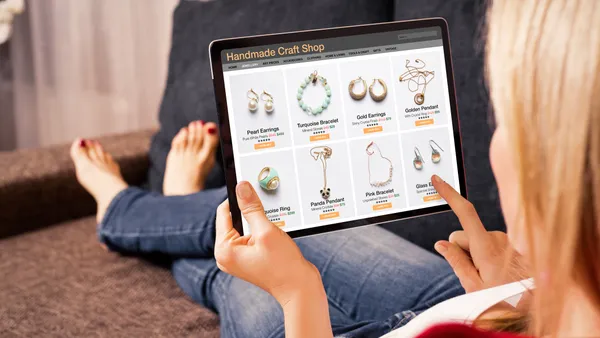Dive Brief:
-
Target said Thursday it has redesigned its popular Cartwheel mobile couponing application, launched three years ago.
-
Cartwheel users now see personalized offer recommendations based on past purchases and app usage right as they open the app. “Search” and “scan” features are more readily accessible, and there’s also a bottom navigation bar that gathers the app’s various savings tools in one place. In addition, one-click access to the customer's Cartwheel barcode simplifies the checkout process, Target said in a blog post.
-
Target announced earlier this month that it’s ending its curbside purchase pickup pilot to focus on tech initiatives like Cartwheel and “retail fundamentals."
Dive Insight:
Cartwheel has been a hit with many customers from the start, and a boon to the retailer: In its first year, the app led people to visit Target more often and spend more on each visit, according to executives. Since going live in 2013, Cartwheel has now saved Target customers more than $500 million, the retailer said on Thursday.
“[Cartwheel] gives Target a much larger and more frequent mobile application user base than almost any other retailer,” Erich Joachimsthaler, founder and CEO of Vivaldi Partners Group, told Digiday in January.
That has led Target to go all in on its tech baby. In April the company said it’s testing a Cartwheel extension that would allow users to redeem third-party coupons, access made possible through a partnership with digital coupon company Quotient (formerly Coupons.com) rather than deals with manufacturers and vendors themselves.
Users can use their open Cartwheel app to scan an item barcode to see if there’s either a Target deal or other coupon that lowers the price. Store maps show users where discounted items are located, and push notifications announce each week’s new deals.
Cartwheel's newest enhancements remove even more friction, and if and when the app evolves to include a wallet, as rumored, it could be that much more powerful, especially with Target's loyalty REDcard holders.
Target could use such a boost: Last month it missed expectations after first quarter same-store sales increased 1.2%, compared to analyst forecasts of 1.6%, according to research firm Consensus Metrix. Target said it expects to face continued challenges in consumer spending during the second quarter, with same-store sales likely flat or down 2%.














